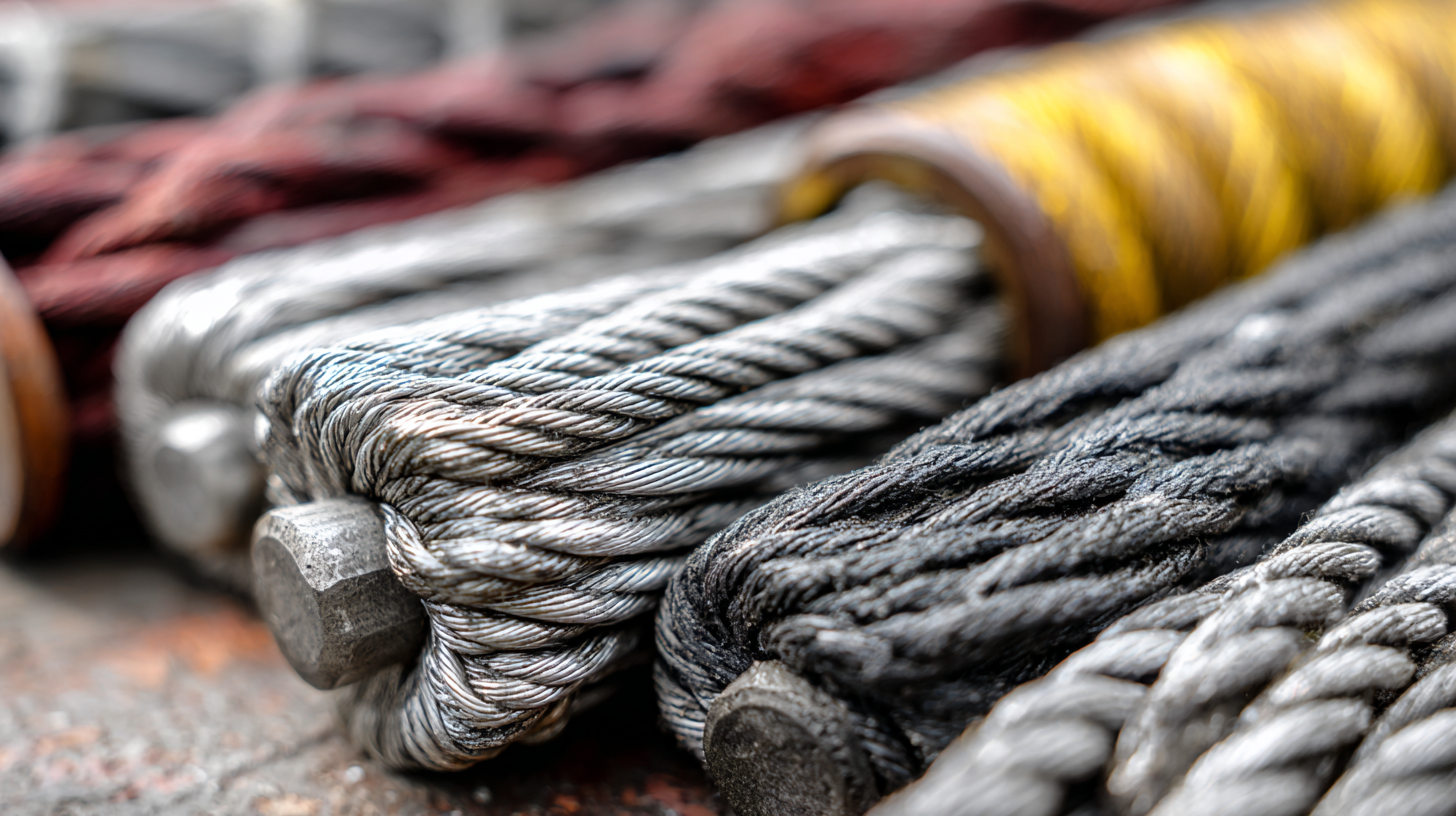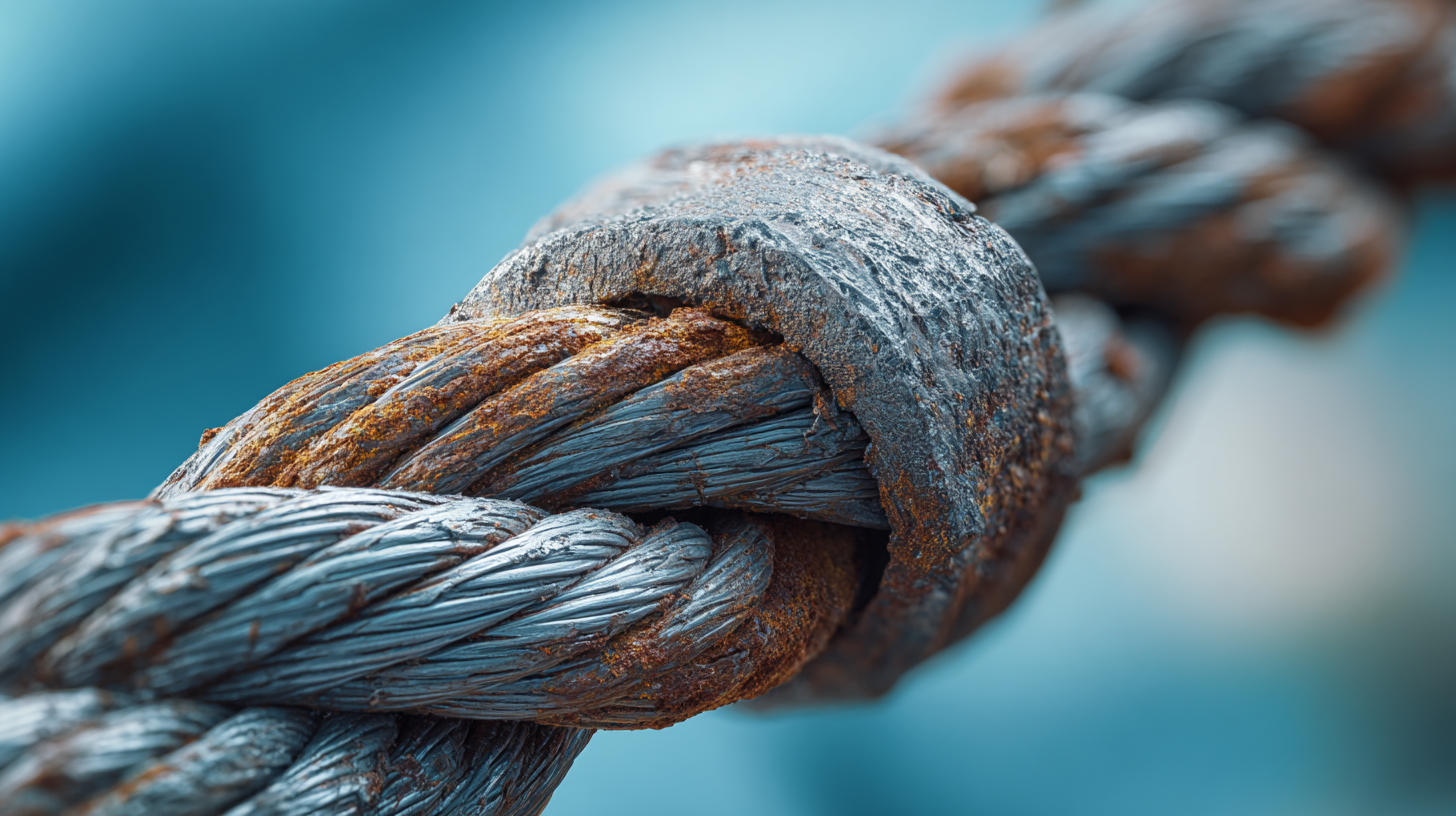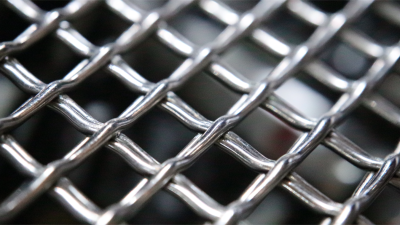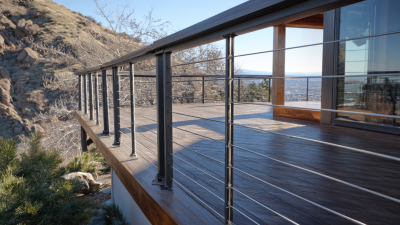Understanding the Lifespan and Maintenance of Wire Rope for Optimal Performance and Safety
In the world of construction, mining, and other heavy-duty applications, the performance and safety of operations heavily rely on the effective use of wire rope. Understanding the lifespan and maintenance practices of wire rope is crucial not only for ensuring optimal performance but also for preventing potential hazards that could arise from equipment failure. This article delves into the best practices and essential considerations for inspecting, maintaining, and replacing wire rope, guiding users to enhance safety and efficiency in their operations.

By exploring the lifespan factors and expert recommendations, we aim to empower users with the knowledge needed to maximize the reliability of wire rope, ultimately contributing to safer and more productive workplace environments.
The Importance of Regular Inspections and Monitoring for Wire Rope Longevity
Regular inspections and monitoring play a crucial role in ensuring the longevity and safety of wire rope. Over time, wire ropes can suffer from wear and tear, leading to potential failure if not addressed promptly. By conducting routine checks, operators can identify early signs of damage, such as fraying, corrosion, or kinks, allowing for timely intervention. This proactive approach not only extends the lifespan of the wire rope but also enhances overall operational safety.

Tips for effective wire rope inspections include checking for proper lubrication, as inadequate lubrication can lead to increased friction and wear. Additionally, always inspect for signs of rust or other forms of corrosion, particularly in environments exposed to moisture or chemicals. It's beneficial to maintain a detailed log of inspections to track any wear patterns over time, helping to inform maintenance schedules and replacement needs effectively.
Moreover, implementing a monitoring system can further streamline maintenance efforts. Using technology such as load monitoring devices can provide real-time data on strain and usage, alerting operators to abnormal conditions before they lead to failure. By prioritizing regular inspections and adopting modern monitoring techniques, crews can ensure optimal performance and safety of their wire rope systems.
Key Factors Affecting the Lifespan of Wire Rope: Wear, Corrosion, and Environmental Conditions
The lifespan of wire rope is significantly influenced by key factors such as wear, corrosion, and environmental conditions. Wear is a natural result of friction between the wire strands and the sheaves or drums they operate against. Over time, this mechanical degradation can lead to reduced load capacity and safety risks. Regular inspection is essential to identify signs of wear early, allowing for timely replacement and preventing catastrophic failures.
Corrosion poses another serious threat to the integrity of wire ropes. Factors like moisture, salt, and chemical exposure can lead to rust and weaken the metal strands. Protective coatings or materials, such as plastic-coated wire ropes, can mitigate the effects of corrosion, thereby extending the rope's lifespan. Additionally, environmental conditions, including temperature fluctuations and UV exposure, can further impact durability. Understanding these factors is crucial for maintaining optimal performance and ensuring safety in applications where wire ropes are essential.
Best Practices for Proper Maintenance and Care of Wire Rope Systems
Proper maintenance of wire rope systems is essential to ensure their longevity and reliable performance. Regular inspection is a critical best practice; it allows operators to identify wear, corrosion, and other potential issues early. Each inspection should focus on the rope’s outer strands, core integrity, and signs of kinking or crush damage. Maintaining an accurate log of inspections can help track the rope's condition over time and inform decisions about replacement or repairs.
Tips for maintaining wire ropes include ensuring proper lubrication to reduce friction and wear between strands, especially in high-stress environments. Use a lubricant designed specifically for wire ropes, and apply it according to the manufacturer’s recommendations. Additionally, avoid dragging the wire rope across abrasive surfaces or allowing it to come into contact with harsh chemicals that could degrade its material. Protecting the rope from environmental elements, such as moisture and extreme temperatures, will further enhance its lifespan.
Regular training for personnel handling wire ropes is also vital. Ensure that they are familiar with safe handling practices and understand the importance of system maintenance. Consider scheduling periodic refresher courses to keep safety protocols fresh in everyone’s mind, which will contribute to both performance optimization and workplace safety.

Understanding Load Limits and Safe Usage Guidelines for Wire Rope
When working with wire rope, understanding load limits is paramount for ensuring safety and optimal performance. Each wire rope is designed with specific weight capacities, which are influenced by its construction, material, and diameter. It is essential to consult the manufacturer's specifications to determine the maximum load a particular wire rope can safely support. Overloading can lead to severe consequences, including rope failure, which poses a significant risk to both personnel and equipment.
In addition to knowing load limits, following safe usage guidelines is crucial. Operators should conduct regular inspections for wear and damage, such as breaks in the strands or corrosion. Proper handling techniques, including avoiding kinks and loops, help maintain the integrity of the wire rope. Additionally, employing appropriate rigging practices, such as ensuring the correct angle of lift and using suitable connectors, enhances safety and performance. By adhering to these guidelines, users can maximize the lifespan of wire rope and reduce the chances of catastrophic failures during operations.
Wire Rope Load Limits and Lifespan Analysis
This chart illustrates the relationship between the load limits and lifespan of different wire rope types based on their usage frequency and maintenance levels. It's crucial to adhere to safe usage guidelines to ensure optimal performance and safety.
Signs of Wear and When to Replace Wire Rope for Safety and Efficiency
Wire rope is a critical component in various industrial applications, making its maintenance essential for safety and performance. Recognizing signs of wear is vital to ensure that the wire rope operates effectively and avoids catastrophic failures. Key indicators of deterioration include visible fraying, rust, or kinking. If the rope has lost more than 10% of its original diameter or exhibits more than two broken wires in a single strand, it is imperative to consider immediate replacement. These signs indicate that the wire rope has become compromised and may no longer meet the safety standards required for operation.
Timely replacement of worn wire rope not only enhances safety but also improves efficiency in operations. Waiting too long to replace a damaged rope can lead to unpredicted breakdowns, potentially causing serious accidents or financial losses. Regular inspections and adhering to the manufacturer’s guidelines on maintenance can help facilitate early detection of wear and tear. Proper documentation of usage and condition will aid in scheduling replacements proactively, ensuring that the equipment remains in optimal working order and minimizing the risk of failure.
Understanding the Lifespan and Maintenance of Wire Rope for Optimal Performance and Safety
| Dimension | Description | Typical Lifespan (Years) | Signs of Wear | Recommended Replacement |
|---|---|---|---|---|
| Diameter | The thickness of the wire rope measured in millimeters or inches | 5-10 | Reduced diameter due to wear | When diameter decreases by 10% |
| Number of Broken Wires | Total number of wires that are broken in a length of rope | 3-20 | Visible broken wires across strands | More than 5% of the wires are broken |
| Corrosion | Degradation of wire material due to chemical or environmental exposure | 3-15 | Rust spots or pitting on the surface | Severe corrosion affecting mechanical integrity |
| Length | Total working length of the wire rope | 5-25 | Excessive elongation or deformation | When elongation exceeds 5% of original length |
| End Fittings | Connections or fittings attached to the wire rope | 5-15 | Cracks or wear on fittings | Any defect affecting the attachment safety |
Related Posts
-

Why Cable Handrails Are the Future of Modern Stair Design: Safety Meets Aesthetics
-

Exploring the Benefits and Design Options of Modern Cable Railing Systems for Homes
-

Exploring Stainless Steel Mesh Innovations at the 138th Canton Fair 2025: Industry Trends and Insights
-

Why Metal Cable Railings are the Future of Modern Outdoor Design: A Comprehensive Guide
-

Exploring the Benefits of Wire Deck Railing: A Comprehensive Guide to Safety and Aesthetics
-

The Science Behind Stainless Mesh and Its Impact on Modern Industries